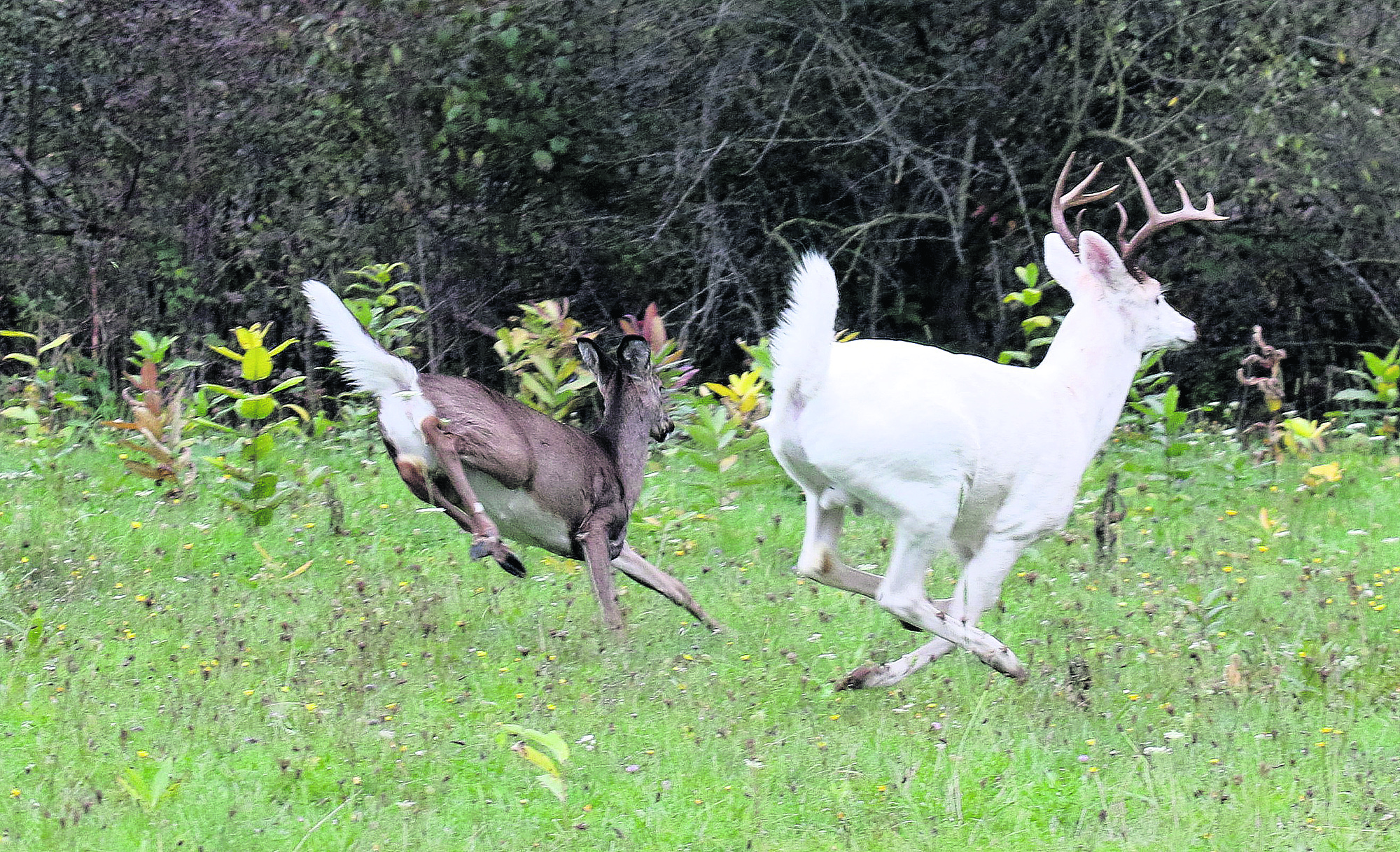
By JOHN KEKIS
Associated Press
ROMULUS, N.Y. (AP) — Dennis Money unlocks the gate that blocks access to the 3,000-acre spread that these days almost serves as his home away from home, jumps into a van, and cautions his guests before proceeding. “I won’t guarantee you’ll see one, but there’s a good bet you will,” Money, a retired utilities executive, says as they proceed past the 10-foot-high fence that keeps the world’s largest herd of white, white-tailed deer in one place and safe.
Seconds later, one of the ghostly white creatures leaps out of the woods, stares for a second at the intruders — then darts away. It won’t be the last on this day as Money, president of Seneca White Deer Inc., maps a route for another tour of a most unusual wildlife sanctuary — a military relic in the heart of the Finger Lakes region of upstate New York. The former Seneca Army Depot, about 57 miles (92 kilometers) southwest of Rochester, was the U.S.
Army’s main East Coast munitions storage facility for six decades until it was decommissioned in 2000.

Now it’s home to approximately 75 white deer. Seneca White Deer today conducts tours year-round — fall is a prime time for viewing — and helps make sure the deer have enough food to survive. The white deer are not albinos and their color makes them easy targets for predators and hunters. “I absolutely love it. I’m so proud of what they’re doing there,” said 84-year-old Pidge Bower, who owns a 500-acre farm in nearby Potter, New York. “It blew me away. I love the white deer.
I think they’re beautiful and I’m glad they’re protected.” The history of how the depot became home to the deer is as fascinating as spotting one of the snowy white creatures. On the brink of entering World War II in 1941, the U.S. Army selected a site between Seneca Lake and Cayuga Lake to build a facility that would house the latest munitions. Construction of 519 concrete igloos, which still stand and are part of the tours, was completed in just four months along with 70 miles of roads that crisscrossed a 10,000-acre layout.
When all of the igloos were filled, it’s estimated they held 100 million pounds of explosives. Documents found by Seneca White Deer suggest the depot housed the Army’s largest stockpile of atomic weapons. “We lived through those times,” Bower said. “There were rumors locally, but you know what, most of them were probably true. The nuclear thing was huge, huge. The country folks knew something was going on. It was very obscure. It was rumored. ‘Do you know what?’ ‘I don’t believe that. Why would they do that?’ It was just fascinating to me.”

Several dozen white-tailed deer, which are native to the region, were trapped inside the 24-mile-long depot fence when it was erected and, shielded from predators and hunters, the herd multiplied. In 1949, two all-white deer, a natural variation of the white-tailed deer, were spotted by soldiers and protected on the depot grounds. Over the ensuing decade the white deer population quickly grew to around 200. The herd then gradually declined, but after most of the depot grounds were transferred to a private owner two years ago preservation of the rare animals became a priority.
The depot also was the sight of an anti-nuclear protest throughout the summer of 1983 and into 1984, the first at any U.S. military property. It was conducted by about 15,000 women associated with the Seneca Women’s Encampment for a Future of Peace and Justice, which was formed to protest the scheduled deployment of missiles to Europe. Tours in 25-seat, air-conditioned buses last 90 minutes and start at the John and Josephine Ingle Welcome
Center at 5632 NY Route 96A in Romulus, New York.
The cost is $30 for adults, $27 for military and seniors, $15 for children ages 5 to 17 and kids under 5 are free. The tours are generally conducted all year from Thursday through Sunday. Seneca White Deer also offers specialty tours for hikers, photographers, and bicyclists.



















